Cheeses 🧀 The Crottin de Chavignol #6
The Crottin de Chavignol
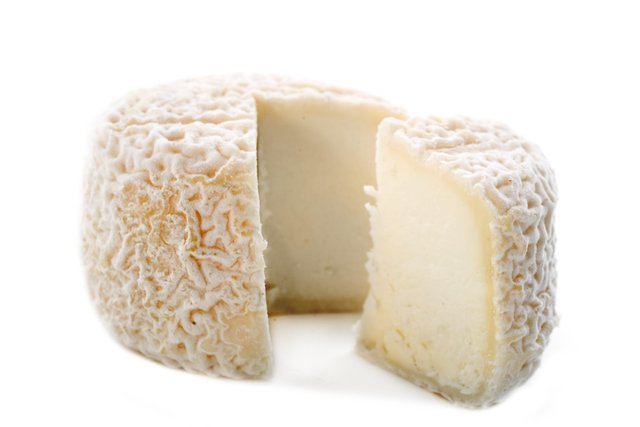
Is a French goat cheese from the village of Berrichon Chavignol located in the department of Cher, the Center-Val de Loire region and the natural region of Sancerrois.
It has had a Appellation of Origin controlled (AOC) since 1976 and Appellation of Origin Protected (AOP) since 1996. The Syndicat du Crottin de Chavignol is an association to which the AOP breeders and cheesemakers adhere.
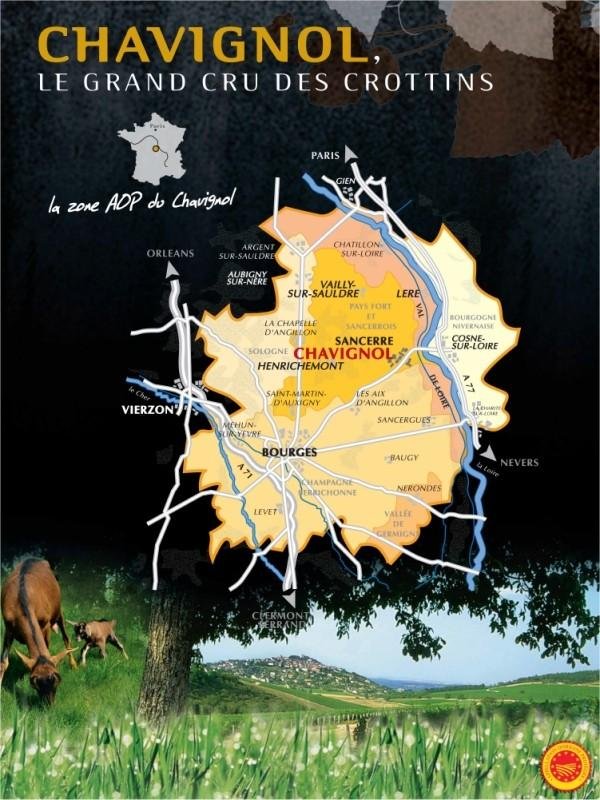
The cheese takes its name from the village of Chavignol merged with the municipality of Sancerre between 1790 and 1794.
Crottin is the word used to describe the stool of equines but the cheese would take its name from the word berrichon "crot" which means "hole".
The crots referred to places along the rivers where the laundry was washed. The clay soil that formed these banks was used to make oil lamps and cheese molds for draining the curd.
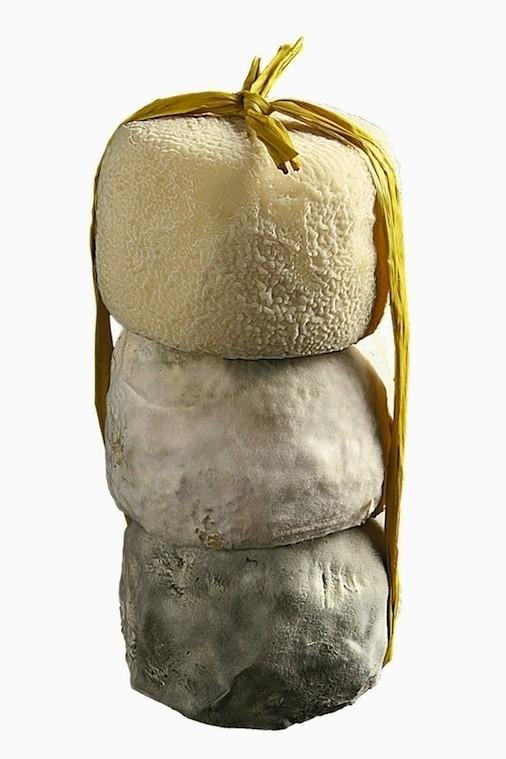
The curd
The term curd is used for a definition of French cheese: the physical state after the coagulation of milk or a cheese in the ephemeral physical state and therefore to consume without delay.
The curd is a solid product, derived from milk by precipitation of its caseins under the effect of an acidic substance and / or rennet. This is the first state of any cheese. The remaining liquid part is whey or whey.
The transformation of milk into curds is called "coagulation" or "coagulation". In dairy, curdling milk is usually obtained by adding rennet. But any acid, such as lemon juice or vinegar, is likely to lead.
The curd is also the name, commercial or popular, cheese freshly produced in some regions and French terroirs of the South of France. It is a fresh cheese made from cow's milk, goat's milk or sheep's milk.
Outside the Great South of France, this fresh cheese takes different denominations or appellations. In Germany, Quark, the main ingredient of Käsekuchen, is at the origin of the American cheesecake.
The curd is eaten with salt, pepper, herbs (chives, thyme, ...), sugar, honey, jam, etc.
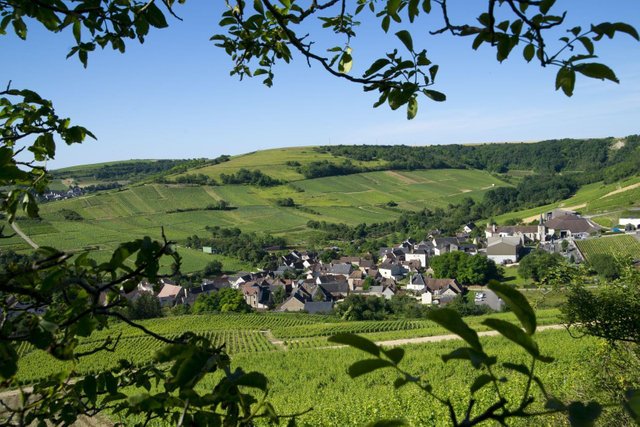
History
Goat farming in the Sancerre region is a tradition that dates back to the 16th century.
At the end of the 19th century, the epidemic of phylloxera devastating the vines, a large part of the plots is recycled in goat farming in Sancerrois, Giennois and part of Sologne.
The first refiners collecting cheese on farms are set up in the early twentieth century.
The Crottin de Chavignol obtains the AOC by the decree of February 13, 1976 published in the official journal of the French Republic on February 24, 1976. The cheese obtains the AOP in 1996.
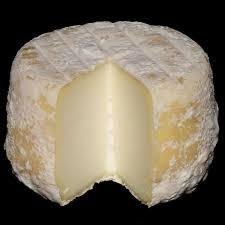
The area of appellation du Crottin de Chavignol covers an area of 550,000 hectares spread over the territory of three departments and 214 municipalities of the Center and Burgundy regions. The department of Cher is its largest area but also the departments of Nièvre and Loiret.
Characteristics
Crottin de Chavignol is a raw milk cheese made from whole goat's milk, it is obtained by lactic coagulation. It is in the form of a flat cylinder slightly convex at its periphery. The central diameter, superior to the diameters high and low, is the consequence of the obligatory reversal in mold.
The thin ivory crust may or may not have white or blue molds that go up to a darker or even brown stage for so-called ironed cheeses. The dough, white and relatively firm, can become brittle depending on ripening.
Each cheese has a total dry matter weight between 37 and 45 grams, its fat content is at least 45% of the dry matter, its total weight is between 60 and 90 grams in business output.
Breeding
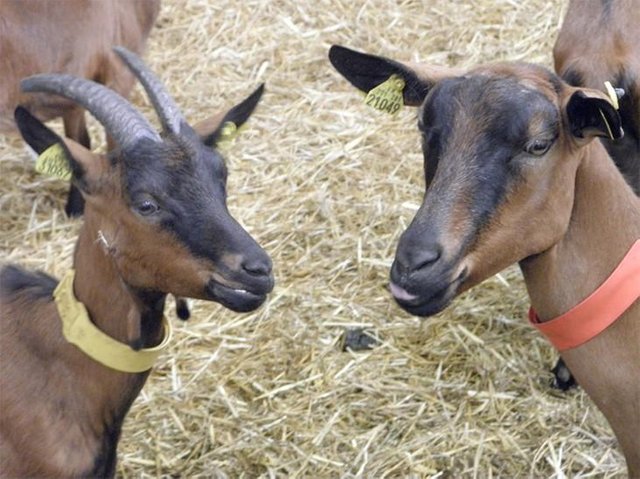
Goats will all have to be alpine. This breed is a very good dairy with 800 liters on a lactation of 260 days. It gives a rich milk with 3.5% fat and 3.1% protein.
They are fed through a daily food ration consisting of at least 75% of food produced in the geographical area of the AOP.
Manufacturing
The cheese is made by lactic coagulation of whole and raw goat's milk, with the addition of a small amount of rennet (rennet is a coagulant of milk of animal origin extracted from the abomasum (the fourth stomach) of young ruminants. consists of active enzymes called chymosin and pepsin and is used to coagulate the milk needed to make cheese).
The cheese is made by farmer's workshops, artisanal or industrial.
The sector is made up of 70 milk producers, 22 cheese producers selling to refiners, 23 direct selling farmers, 3 refiners and 1 processor (dairy). The production bearing the AOP label for the year 2015 is 774 tons, which represents 13 million Crottin de Chavignol marketed of which 31% is farmer.
Oh! What a great topic to do posts about! Wonderful info. Following you.
Yummy!
Very interesting. I really love cheese, just yesterday I wrote about the Portuguese cheese Azeitao) Looking forward to new cheese-stories from you!
upvoted
Thanks dear @indesta120282 for different informative post.Is this coagulation are available worldwid & can we feed this cheese to cow?If yes then we can buy for our firm.
Que bien quiero invertir en cabras lecheras, me parece fabuloso este articulo
this is great analysis, thanks for sharing..
do you know that crotin in french means poop in english?
The Crottin de Chavignol. This food is Awesome. I like Cheese & Sweats. Thanks @indesta120282 for shuch a wonderful & healthy food.
It's great information for me.... thanks a lot lndesta